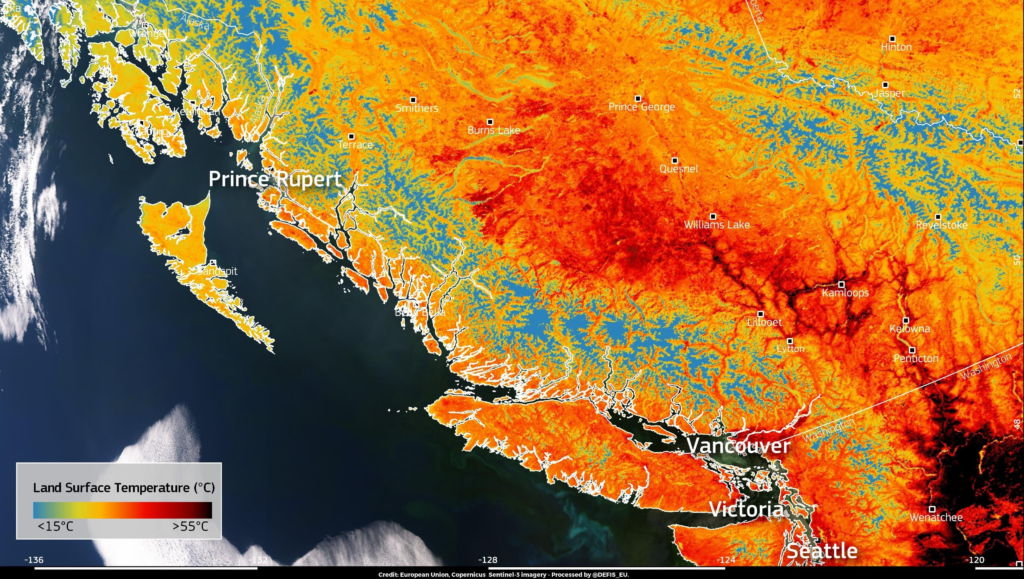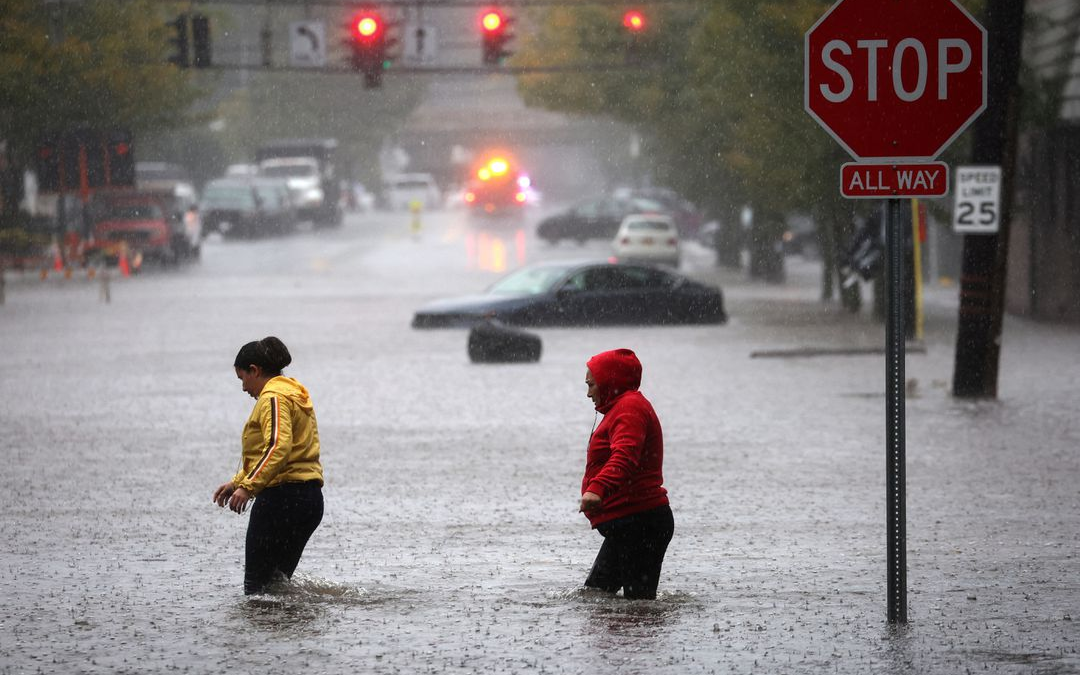Ground temperatures reached an astounding 145 degrees during the Pacific Northwest heatwave in early summer 2021

By Brian Kahn
29 June 2021
(Gizmodo) – Air temperatures during record-setting heatwave in the Pacific Northwest were bad enough. But the ground was on a whole other level.
Stunning new satellite imagery from the European Space Agency’s Sentinel-3 satellite shows ground temperatures reached as high as 145 degrees Fahrenheit (63 degrees Celsius) in Wenatchee, Washington. Apparently even the Earth we stand on isn’t safe from the climate crisis.
The Pacific Northwest has been roasting under a record heat dome for days on end. That’s resulted in consecutive days of temperature records falling, including some that have stood for decades. Those temperatures are based on air readings. Most weather stations in the National Weather Service’s monitoring network sit anywhere from 4 to 6 feet (1.3 to 1.8 meters) off the ground to capture accurate readings. They’re also situated on level ground as far from concrete as possible. That’s certainly helpful for long-term records at specific places, and the data from those stations offer conclusive proof of how much the world has warmed.
But satellites can provide a different flavor for understanding heat. The Sentinel-3 satellite has a sensor dubbed the Sea and Land Surface Temperature Radiometer that allows it to capture various views of, you guessed it, the surface temperature of the Earth—how hot the literal ground beneath your feet is. The same sensor revealed shocking heat in Siberia earlier this month, and it gives a whole new perspective to the Pacific Northwest heatwave. Heat in the air can dissipate, but the ground can hold and build heat over longer periods once air temperatures crank up. That’s particularly true in places with lots of concrete, which is why you can fry an egg on the sidewalk on hot days, but trying to sous vide it using air temperatures only would get you nowhere. […]
When you get east of the mountains where the air and ground temperatures truly heat up. That region is cut off from the Pacific Ocean that acts as a moderating influence on air temperatures. Lytton, a town in the interior of British Columbia, set an all-time Canadian heat record on Monday (breaking the record it set on Sunday). But the small city of Kamloops, located about 62 miles (100 kilometers) to the northeast, saw ground temperatures that were even hotter. Again, the town of roughly 90,000 is much more populated than Lytton, and that extra concrete helped ensure ground temperatures were higher. The Sentinel-3 data shows that it reached 133 degrees Fahrenheit (56 degrees Celsius) there.
In the interior part of Washington, a similar pattern played out with even more extreme ground temperatures. A large swath of the state saw them reach 131 degrees Fahrenheit (55 degrees Celsius) or greater, including the aforementioned 145-degree-Fahrenheit reading in Wenatchee. [more]
Ground Temperatures Reached an Astounding 145 Degrees in the Pacific Northwest

